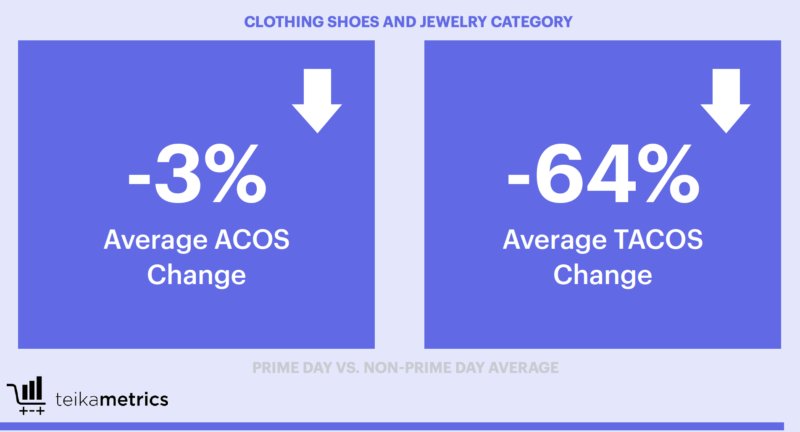3 Trends from Prime Day 2019 to guide your Black Friday and Cyber Monday Amazon strategy
Sellers focusing budget and discount efforts on specific, strategic product lines, rather than an entire catalog, are likely to see the biggest sales bumps.
While shoppers may be thinking “back to school” for sellers, September means it’s time to set a strategy for key Q4 sales events like Black Friday and Cyber Monday, if you haven’t started already. To help marketers get a better handle on how to maximize their sales and profit over these high-traffic periods, my colleagues and I examined Prime Day 2019 sales activity across our client base of thousands of Amazon sellers. The results showed that the biggest trends to watch are the increase in volume not matching cost-per-click increases, product discounting not being a barrier to revenue growth and the impact of organic sales.
The data below is based on two separate studies comparing Prime Day and non-Prime Day performance. Vertical-specific data is derived from sales and advertising activity across more than 1,300 products sold by our clients in each of the “Clothing Shoes and Jewelry,” “Health and Household” and “Home and Kitchen” categories on Amazon.
Non-vertical specific data is reflective of sales and advertising performance data across more than 1,100 products sold by our clients.
In both data sets, the Prime Day period represents data collected on July 15 and 16, 2019. The “non-Prime Day” period represents data collected over the four Mondays and Tuesdays prior to Prime Day. Specifically, these ‘non-Prime Day’ dates were averages across June 17, 18, 24 and 25, along with July 1, 2, 8 and 9. Finally, all products included in the study averaged at least one weekly sale over the ‘non-Prime Day’ period.
Expect markedly higher volume – but not (necessarily) CPCs or conversion rates
Events like Prime Day obviously generate a massive increase in traffic and sales on Amazon, but the corresponding increase in advertising activity doesn’t necessarily cause cost-per-clicks or conversion rates to rise at the same rate. Within the “Clothing Shoes and Jewelry” category, conversion rates stayed the same, and cost-per-clicks actually dipped 5.7% on Prime Day, despite ad spend rising 33% and revenue rising 540%.

Of course, this does vary a bit by category. Within the “Health and Household” and “Home and Kitchen” categories, cost-per-clicks did rise in the low-double-digit percentages with conversion rates close behind. Yet it’s worth noting that these higher costs of advertising dovetailed with significantly larger revenue increases – to the tune of several hundred percentage points.
These stats underscore why marketers should increase budgets during high-traffic events like Prime Day. There is a unique ability during these events to drive large double- to triple-digit increases in daily sales figures through advertising across key search terms, with a minimal increase in cost on a cost-per-clic basis. Prime Day is no secret to sellers, but despite the obvious marked increase in competition from an advertising perspective, the increase in the ‘supply’ of users buying on Amazon during these high-traffic periods is outpacing advertising activity.
Don’t sleep on organic sales
In the same vertical-specific data set for Clothing Shoes and Jewelry, it’s worth noting the substantial increase in organic sales on top of advertising-derived sales. The average change in TACoS (total advertising cost of sale), which combines ad-derived and non-ad derived sales, was -64%, while the

TACoS is important to track because of the nature of Amazon’s algorithm. Activity generated by a paid listing impacts organic ranking, on top of behavior like consumers beginning with an unbranded search within a product category, seeing a brand in a paid listing, and then immediately doing another search for that brand’s products.
In this way, the fact that organic sales jumped more than ad-derived sales actually bolsters the case for aggressively advertising leading into high-traffic periods – even if this means pulling back on budgets earlier to save up for that big push. Advertising a product on key unbranded terms can have effects that help drive increased organic sales during these lucrative events.
It’s not ‘discount or die’
Out of the more than 1,100 products we studied across a wide variety of categories over the Prime Day period, 94% saw revenue increases compared to the prior four Monday and Tuesday average. But importantly, while discounted products saw the largest average period-over-period revenue increases (+820%), the roughly 59% of products in the sample that were not discounted over Prime Day still saw average revenue growth of +496%.

The data above illustrates how discounts do help in generating higher sales over events like Prime Day, but also that consumers coming to Amazon during these times are in the mood to shop generally. While they may be bargain hunting for some items, it’s clear a sizable percentage are buying products which are not discounted, and rising overall sales volume.
As there is revenue growth across the board, you should be strategic in terms of what products in your catalog should be discounted or promoted via a Prime Day or similar deal in order to generate the best outcome for their business. Maintaining margins can absolutely be taken into account, alongside maximizing sales volume. Depending on your situation, this could mean, for example, discounting a soon-to-be deprecated product to move as much volume as possible, or discounting a brand new product to maximize sales, relevancy, and reviews to feed long-term visibility on Amazon.
Pulling back a bit, talking to sellers we generally saw companies that employed aggressive advertising strategies have the biggest sales bumps on Prime Day. Granted, in nearly every one of these cases, the seller was focusing its budget and discount efforts on specific, strategic product lines, rather than an entire catalog. Expect this to also be the case during Black Friday and Cyber Monday.
Opinions expressed in this article are those of the guest author and not necessarily MarTech. Staff authors are listed here.
Related stories